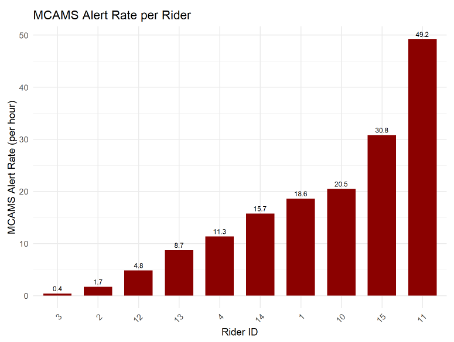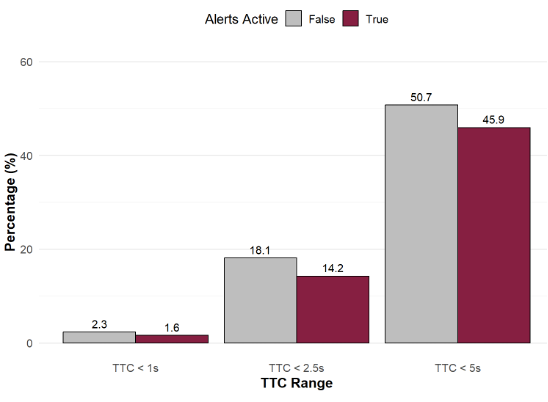RideHawk™ Case Study: Jakarta
Overview
Between April 2024 and January 2025, a technology research and development pilot was undertaken for a new safety technology aimed to mitigate the risk of motorcycle road crashes. Data from the World Health Organization (WHO) indicates that of the 1.2 million road deaths that occur globally each year, 93% of these deaths occur in developing countries where motorcycle use is a predominant mode of transportation. Due to the design of motorcycles, riders are considered “vulnerable road users” as it only takes a crash, at a modest speed, to result in injury or death to riders. As such, an opportunity exists, with technology, to mitigate the risk that riders face. To this end, Motorcycle Safety Solutions (MSS) was formed to design, develop and test risk mitigating countermeasures.
With the large number of motorcycles in operation in Indonesia, MSS selected Indonesia as its initial test location. World-renowned road safety researchers at the University of Indonesia and the Institut Teknologi Bandung were contracted to conduct an evaluation study to assess the safety benefits of RideHawk™, a new technology from MSS to support rider safety.
Method
Ten first generation RideHawk™ units were developed and installed on volunteer participants own motorbikes. Participants were selected based on their self-report of being active (daily) riders. Each participant was affiliated with the universities as either students, faculty, or otherwise connected to faculty. The study was a “before-after” design where after RideHawk™ was installed, it was place in “data collection” mode and no risk mitigation functionality (e.g., alerts) were operational. After approximately 1 month of baseline data collection, to assess normative riding behavior and performance, RideHawk™ functionality was activated. Using this method, safety impacts can be analyzed by comparing rider performance with the alerts to that same rider’s performance prior to the alert activation.
Results
Over the course of the study, a total of 647 trips were recorded, resulting in a cumulative trip duration of 269 hours. Though a number of interesting findings resulted from this pilot, and those will be detailed in an academic publication expected to be released late 2025 or early 2026, two key findings regarding safety are highlighted below. Keep in mind that the system was designed to mitigate the risk that riders face each time they use their bikes.
The first key finding, and not unexpected as highlighted in Figure 1, was that risk varied widely across the 10 participants with some riders showing minimal risk, while other riders, being more aggressive, had a great risk. Risk was assessed in the analyses by recording and comparing the frequency of forward collision warning (FCW) alerts before and after the system was activated. What is important about this finding is the RideHawk™ was able to capture unique riding behaviors across the study cohort and able to identify those riders, within a cohort, that have the highest risk. This is an important finding as those with the highest risk can be targeted for tailored rider training based on the rider’s own performance limitations (this will be active in future versions of RideHawk™). That is, before issuing targeted training, it had to be established that RideHawk™ could identify the risk for each rider.

Figure 1. Alert rate for each of the 10 riders in the Jakarta pilot study. A key takeaway is that "RideHawk" was able to capture high risk scenarios and riders across the cohort have different levels of risk (as expected).
A second key finding, shown in Figure 2, was that riders changed their behavior, and operated their bikes more safely, when v was active. This is a key finding underscoring the expected safety efficacy that RideHawk™ will have. A key feature of RideHawk™ is that it alerts riders when their “time-to-collision” (TTC) is shorter than needed. That is, safe riding requires riders to provide a sufficient “safety bubble” between their bike and vehicles ahead of them. When the encroach too closely to lead vehicles, sudden stops by those lead vehicles can lead to the riders running into the backs of these vehicles. Therefore, riders must maintain a sufficiently sized “safety bubble” to avoid being in situations where they risk running into the back of lead vehicles. In figure 2, the gray bars are the occurrences of riders encroaching into short safety bubbles in the baseline (no alert) phase, which the red bars represent those same metrics once the system was active. The x-axis (bottom) represents three TTC ranges that the operator can adjust on RideHawk™. As can be seen, at each of the three settings, riders increased their safety bubbles and spent less percentage of time in higher risk situations. This is shown by the red bars being less than the gray bars. This important finding demonstrates that RideHawk™ was successfully influencing rider behavior and riders responded to RideHawk™by riding with a larger safety bubble.

Figure 2. Riders responded positively to RideHawk™ by riding more safely and increasing their safety bubble with lead vehicles.
Conclusions
The Jakarta case study was critical to understanding the impact that RideHawk™ might have on a cohort of motorcycle riders. Through this study, with an early generation system, we were able to confirm the following:
- RideHawk™ can effectively capture data in the field
- RideHawk™ can identify high risk riding situations across a cohort of riders
- RideHawk™ can mitigate the risk that riders face by modifying their riding behavior. Riders rode more safely with RideHawk™ as compared to riding without RideHawk™.
Future case studies in other ASEAN countries will follow using the same model whereby Motorcycle Safety Solutions will work alongside renowned road safety researchers in Thailand, Vietnam, and Malaysia. Follow-up pilots will utilize newer versions of RideHawk™ and the analyses will target other aspects of RideHawk™’s functionality (e.g., receptiveness to training information, behavioral changes resulting from training, improvement of “safety scores” over time, the impact that incentives have on encouraging safe riding behavior).
Contact
For additional information, or to inquire about using RideHawk™ in your business operations, please contact:
ASEAN- Stefan Pertz:
Global- Rich Hanowski:
